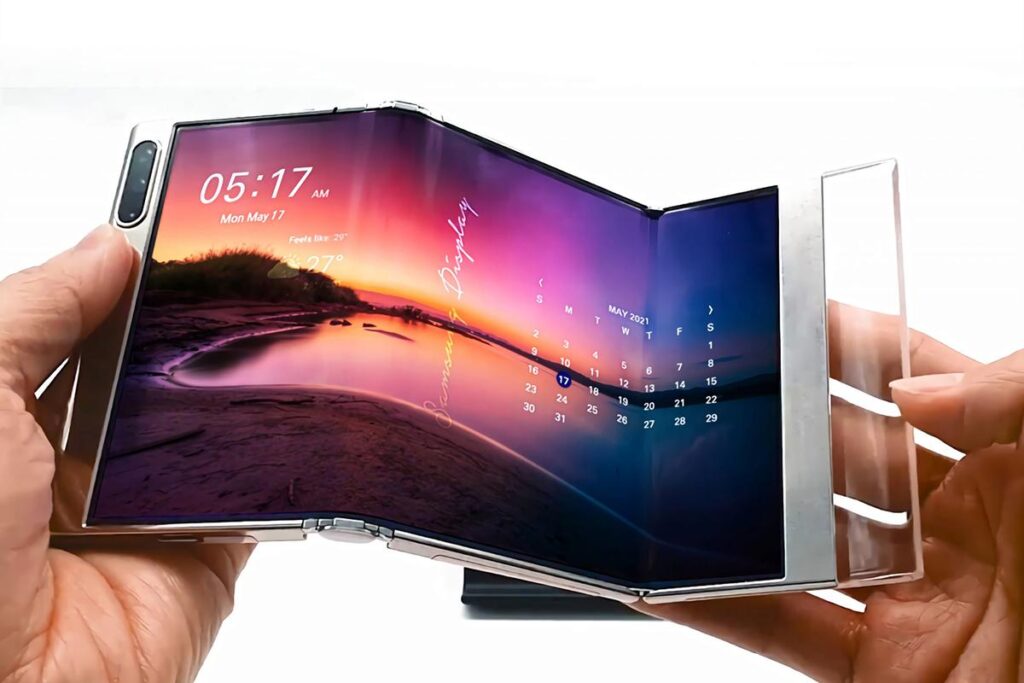In a groundbreaking announcement, Samsung has unveiled its latest innovation: the rollable display for smartphones. This cutting-edge technology promises to redefine the mobile experience, allowing users to enjoy a larger screen without compromising portability. With the integration of flexible OLED technology, Samsung’s rollable display is set to enhance user interaction, making it a game-changer in the smartphone industry. As we delve deeper into this exciting development, we will explore the implications of rollable displays and how they could transform our daily lives.
In the following sections, we will discuss the technical aspects of Samsung’s rollable display, including its design, functionality, and potential applications. You will learn how this innovative feature can provide users with a seamless transition between compact and expansive screen sizes, catering to various needs—from gaming and streaming to productivity and multitasking. Additionally, we will examine the challenges Samsung faced during the development process and how they overcame these obstacles to bring this technology to life.
Stay with us as we uncover the future of mobile technology with Samsung’s rollable display. We will also highlight the competitive landscape and how this innovation positions Samsung as a leader in the smartphone market. Whether you’re a tech enthusiast or simply curious about the latest advancements, this article will provide you with valuable insights into the world of rollable displays. Don’t miss out on the opportunity to learn about the next big thing in smartphones!
The Technology Behind Rollable Displays
The rollable display technology represents a significant advancement in smartphone design, allowing screens to expand and contract seamlessly. This innovation is primarily based on OLED (Organic Light Emitting Diode) technology, which enables flexible and lightweight displays. Unlike traditional LCD screens, OLED panels can bend without losing image quality, making them ideal for rollable applications.
Samsung’s rollable display utilizes a unique mechanism that allows the screen to be rolled into a compact form when not in use. This not only enhances portability but also provides users with a larger display area when needed. The engineering behind this technology involves intricate designs that ensure durability and functionality, addressing common concerns about wear and tear in flexible displays.
Potential Applications of Rollable Displays
Rollable displays open up a world of possibilities for smartphone manufacturers and consumers alike. One of the most exciting applications is the ability to create devices that can transform from a standard smartphone size to a tablet size, providing versatility for various tasks. Users can enjoy a larger screen for media consumption, gaming, or multitasking without carrying multiple devices.
Additionally, rollable displays can be integrated into other devices, such as wearables and smart home products. This adaptability could lead to innovative designs that enhance user experience across different platforms, making technology more accessible and user-friendly.
Comparison with Foldable Displays
While both rollable and foldable displays aim to maximize screen real estate, they do so in fundamentally different ways. Foldable displays hinge at a specific point, allowing the device to open and close like a book. In contrast, rollable displays can extend and retract without any visible seams, offering a smoother and more continuous viewing experience.
This difference in design impacts durability and usability. Rollable displays may have fewer mechanical parts that can wear out over time, potentially leading to a longer lifespan. However, the manufacturing process for rollable displays is still in its infancy, and it remains to be seen how they will perform in real-world conditions compared to their foldable counterparts.
Market Impact and Consumer Reception
The introduction of rollable displays is poised to disrupt the smartphone market significantly. As consumers increasingly seek innovative features and designs, rollable technology could attract attention and drive sales for manufacturers like Samsung. Early adopters are likely to be drawn to the novelty and functionality of rollable devices, creating a buzz in the tech community.
However, the success of rollable displays will depend on factors such as pricing, durability, and overall user experience. If Samsung can address these concerns effectively, it may set a new standard in smartphone design, influencing competitors to explore similar technologies.
Challenges in Rollable Display Production
Despite the promising potential of rollable displays, several challenges remain in their production. One of the primary concerns is ensuring the reliability and longevity of the flexible materials used in these displays. Manufacturers must develop robust solutions to prevent issues such as screen creasing or malfunctioning mechanisms over time.
Additionally, the cost of producing rollable displays may be higher than traditional screens, which could impact retail pricing. As the technology matures, economies of scale may help reduce costs, but initial pricing could be a barrier for widespread adoption among consumers.
Future of Rollable Display Technology
The future of rollable display technology looks promising, with ongoing research and development aimed at enhancing performance and usability. As manufacturers continue to innovate, we can expect to see improvements in resolution, color accuracy, and energy efficiency, making rollable displays even more appealing to consumers.
Moreover, as the technology becomes more mainstream, we may witness a shift in design paradigms across the entire electronics industry. Rollable displays could pave the way for new product categories and redefine how we interact with our devices, leading to a more immersive and flexible digital experience.
| Feature | Description |
|---|---|
| Introduction | Samsung has unveiled a new rollable display technology aimed at enhancing the smartphone experience by providing a flexible screen that can expand and contract. |
| Technology | The rollable display utilizes advanced OLED technology, allowing the screen to be rolled up when not in use, making devices more compact and portable. |
| Design | The design features a seamless transition between a standard smartphone size and a larger display, catering to users who desire both portability and a larger viewing area. |
| Usability | This technology aims to improve multitasking capabilities, enabling users to view multiple applications simultaneously on a larger screen. |
| Market Impact | Samsung’s rollable display could set a new trend in the smartphone market, pushing competitors to innovate and adopt similar technologies. |
| Future Prospects | While the rollable display is still in development, Samsung plans to integrate this technology into future smartphone models, potentially revolutionizing the way users interact with their devices. |



